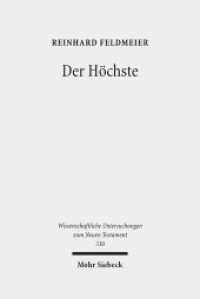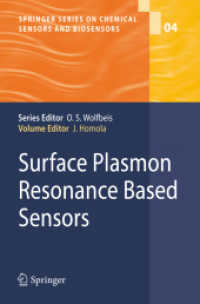- ホーム
- > 洋書
- > ドイツ書
- > Humanities, Arts & Music
- > Linguistics
- > general surveys & lexicons
Full Description
This book showcases the successful integration of multisensory learning and computer-assisted language learning (CALL) in under-resourced schools and universities in Indonesia, aimed at addressing the learning crisis as indicated by the sharp decline of English Proficiency Index and PISA in the last two decades. Multisensory learning provides a well-rounded learning experience that helps students to accelerate their learning. The authors describe how brain-informed learning tools, such as the Verbotonal Approach, Reading for Emotions, and Aesthetics, can facilitate rich and engaging learning practices, and argues that adopting these practices can allow students to take a more active role in their learning, resulting in improved outcomes. This book will be of interest to readers in the Indonesian and other similar contexts, particularly those with an interest in language education, applied linguistics, CALL and TESOL.
Contents
Chapter 1: Introduction: The Learning Crisis in Indonesia and the Need for Multisensory CALL.- Chapter 2: Transforming Writing Pedagogy in Indonesian Higher Education: A Comparative Framework.- Chapter 3: Integrated Methodological Framework: Multisensory CALL Approaches in Blended and Fully Online Academic Writing Contexts.- Chapter 4: Key Findings in Multisensory CALL for Academic Writing: A Study Based on Sudimantara (2021).- Chapter 5: Discussion.- Chapter 6: Findings.- Chapter 7: Discussion.- Chapter 8: Integrating Reading for Emotions into School Curricula.- Chapter 9: Integrating Reading for Emotions and Aesthetics to Enhance Abstract Reasoning Skills: Practical Insights.- Chapter 10: Conclusion and Future Directions.- REFERENCES.








